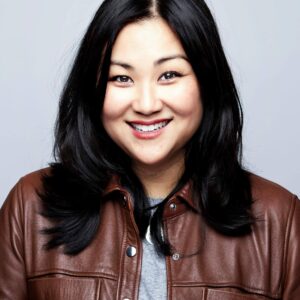
Teaching on the Pivot: Art Is Everywhere
Dear Wabash Blog Readers~
Welcome to our blogosphere innovation for the beginning of this new school year. For the month of September, we will offer Dr. Hong’s masterful reflection on powerful, creative pedagogical pivots that she made in a course in the Spring Semester. Log on every Wednesday of September to for the next compelling installment.
(Part One of a Five Part Serialized Blog)
I’ve always loved art. Some of my earliest memories are of coloring on the walls, much to my mother’s dismay. Today, I enjoy sketching and painting, but as a disclaimer, I’m not a skilled artist by any means. I am someone who enjoys creating art and has grown to appreciate the way the arts have shaped my life and personhood. In my adolescence, I was hungry for art. It didn’t matter that I wasn’t the best at it, just that somehow it filled me up in a way nothing else did. In my search for art, I took every available fine arts class offered at school. I took lessons on Korean calligraphy and painting at my Korean immigrant church on the weekends, joined all the choirs, and tried out for school and community theater. I fell in love with the synergy between the physicality and spirituality of what art did in and through me. The more I learned and engaged in the practice of art, the more art became a necessary spiritual practice.
As a young person who was still trying to understand religion, I somehow sensed that the divine met me in those nebulous and vibrant spaces where art was made. There was nothing as exciting as a blank sheet of paper and that first mark of graphite pencil on its surface. What came after—whatever image or pattern appeared on the page—took on a life of its own, almost of its own accord--sacred about making, giving something shape and meaning. All of us did this so naturally as children. Do you remember? When was the last time you picked up a pencil, crayon, paint, or markers, for fun? When was the last time you built something just to try it? As I grew into adulthood, I continued to love art, but I had a narrower view of it. I thought there was a place and time for art, that I had to carve out intentional space for art to happen.
After I had children, I lost that sense of order and time. Day and night blurred as did my sleeping and waking hours. There was no such thing as carving out space for anything on my to-do list, let alone art. The way I understood and recognized art began to expand to include the practice of noticing. I began to notice the artistic quality of things created and growing around me. It started when I began to see the world through my children’s eyes. As their grownup, I had a lot to relearn from them. Do you also find it sad that we so easily forget the perspective of noticing and marveling as we grow into adulthood? As adults, we need to work hard to relearn and regain the perspective that came so naturally in childhood. For instance, my children gasp when they see insects, not out of fear, but out of interest and wonder. I still only scream.
During my journey to adulthood, I had learned appreciation for the fine arts, but I had forgotten to stop and notice the beauty and artistry of everything around me. Art didn’t have a designated place and time. Life is art. Art is life. During the first year of the pandemic, when both my children were learning virtually at home, so was I. My children shared with me their love of dandelions, ant hills, finding cicada exoskeletons in the summer, and marveling at the chaos of a thunderstorm from the safety of our porch. For them, there was no mundane. There was no simple. It was all gloriously complex and wonderous. How marvelous that those branches were just right for climbing! How curious that there are so many shades of red, orange, and yellow in tomatoes. How weird that cats have whiskers on the backs of their legs. (They do! Check it out.) I keep learning from them that the artistic exists in everything, in both the order and the mess. I keep learning that it is a spiritual practice to relearn appreciation for the miracle of the everyday. It connects me to the divine and back to myself, back to the earth, and back to the people with whom I am in community.
Leave a Reply